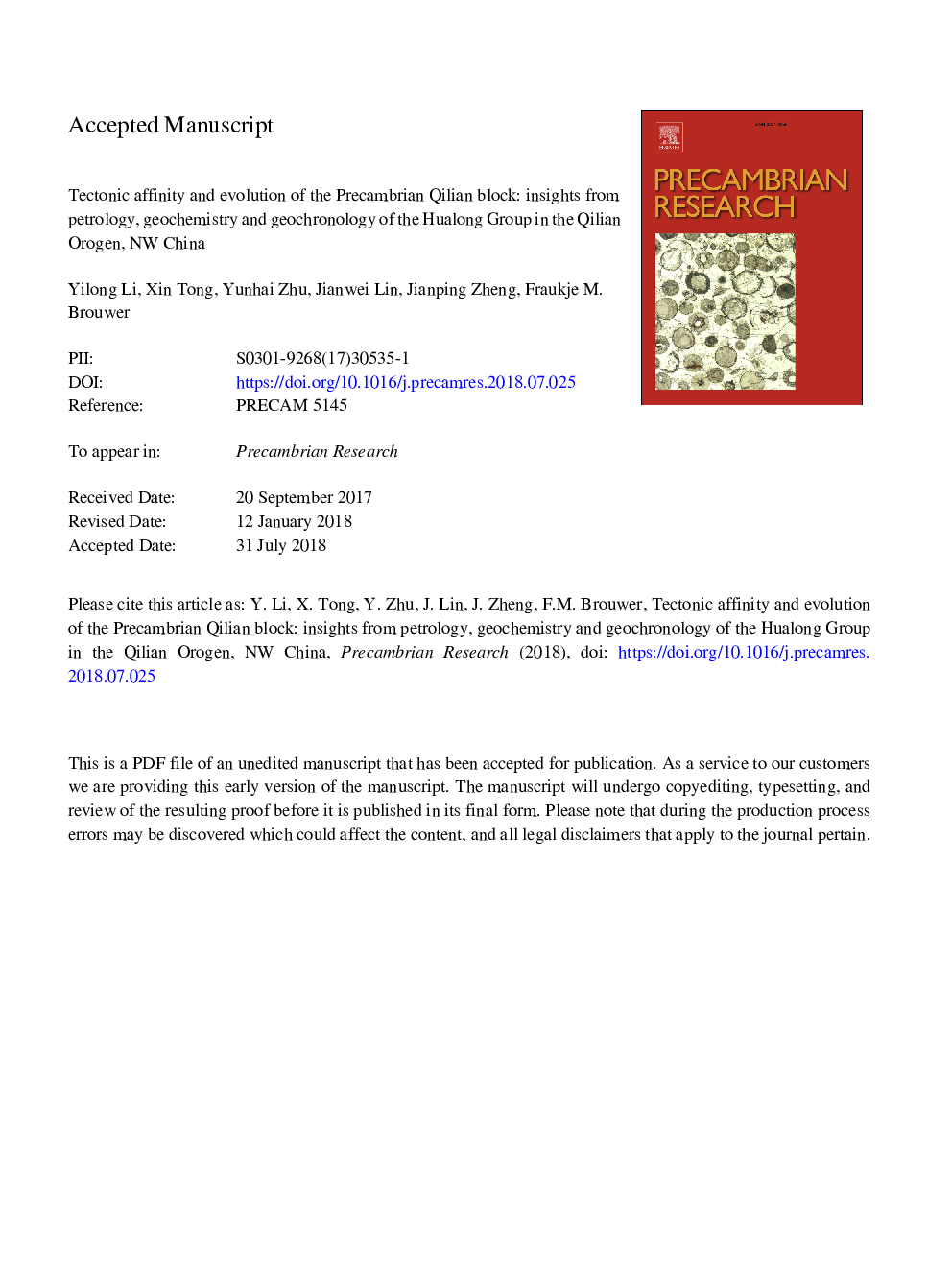| کد مقاله | کد نشریه | سال انتشار | مقاله انگلیسی | نسخه تمام متن |
|---|---|---|---|---|
| 8912478 | 1639560 | 2018 | 82 صفحه PDF | دانلود رایگان |
عنوان انگلیسی مقاله ISI
Tectonic affinity and evolution of the Precambrian Qilian block: Insights from petrology, geochemistry and geochronology of the Hualong Group in the Qilian Orogen, NW China
دانلود مقاله + سفارش ترجمه
دانلود مقاله ISI انگلیسی
رایگان برای ایرانیان
کلمات کلیدی
موضوعات مرتبط
مهندسی و علوم پایه
علوم زمین و سیارات
ژئوشیمی و پترولوژی
پیش نمایش صفحه اول مقاله

چکیده انگلیسی
The Qilian block is a Precambrian block in the Qilian Orogen, which marks the junction of the North China, South China and Tarim cratons. The mechanism of continental growth for the Qilian block remains unclear and several models have been proposed. We present a systematic study of petrology, geochemistry and geochronology of paragneisses and intermediate to basic intrusions from the Hualong Group, which represents the lower part of Precambrian basement of the block. The protoliths of paragneisses are wackes with a maximum deposition age of ca. 900â¯Ma formed at an active continental margin during assembly of the Rodinia supercontinent. Their clastic input was derived from a single source granitic material of ca. 922â¯Ma and the magmas of their source rocks mainly came from reworked Paleoproterozoic crustal sources. The sediments were deposited close to source with a minor degree of weathering and limited sorting. Cooling after amphibolite facies metamorphism affected the paragneisses at 439.6â¯Â±â¯4.9â¯Ma as suggested by a biotite 40Ar/39Ar age. Lenticular quartz diorites with a LA-ICPMS zircon U-Pb age of 900â¯Â±â¯22â¯Ma are adakitic rocks formed by partial melting of lower crustal material. The quasi-lamellar hornblendites have a zircon U-Pb age of 469â¯Â±â¯2â¯Ma and a biotite 40Ar/39Ar age of 465.4â¯Â±â¯3.1â¯Ma. They were derived from a subduction-related metasomatic mantle and underwent fast cooling during their ascent. It is inferred that the Qilian block is a continental fragment that rifted from the South China craton during break-up of the Rodinia supercontinent, which resulted in formation of the North Qilian ocean and the South Qilian ocean as two branches of the global early Paleozoic ocean. The Hualong block, represented by the Hualong Group, is a fragment broken away from the Qilian block during this stage and situated in the South Qilian ocean. Combining our results with existing data, we identify a sequence of seafloor spreading related to a mantle plume activity (ca. 600-500â¯Ma), northward intra-oceanic subduction (ca. 540-469â¯Ma), oceanic crust-continent subduction (ca. 470-446â¯Ma) and continent-continent collision (ca. 446-440â¯Ma) between the Qilian block and the Qaidam block.
ناشر
Database: Elsevier - ScienceDirect (ساینس دایرکت)
Journal: Precambrian Research - Volume 315, September 2018, Pages 179-200
Journal: Precambrian Research - Volume 315, September 2018, Pages 179-200
نویسندگان
Yilong Li, Xin Tong, Yunhai Zhu, Jianwei Lin, Jianping Zheng, Fraukje M. Brouwer,